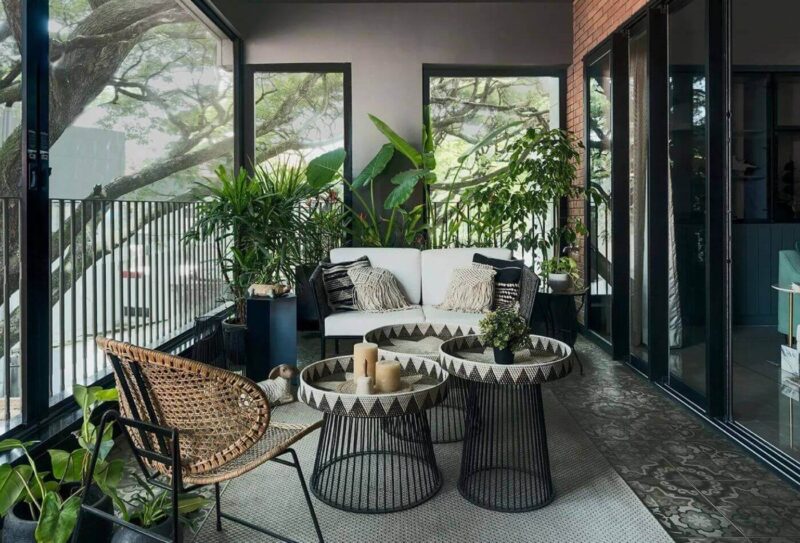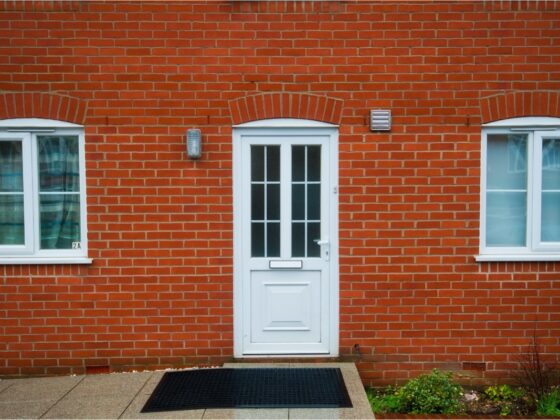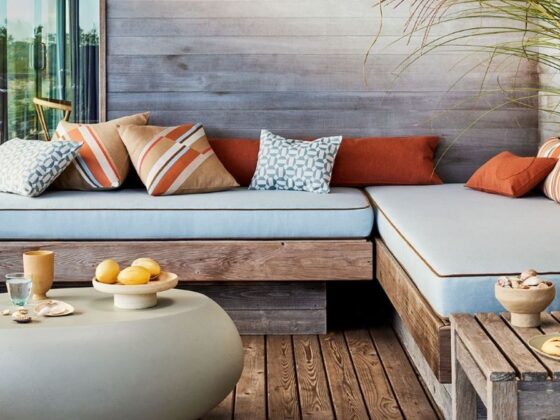Biophilic design has found its way into everyday interiors as more people seek balance, calm, and beauty inside their homes. Inspired by nature, this trend emphasizes organic elements, natural textures, and greenery.
Bringing nature indoors offers emotional and psychological benefits—lower stress, improved mood, and a greater sense of connection.
The goal here is to offer creative and practical ways to decorate with natural elements across different parts of your home.
Backyard & Outdoor Spaces

Indoor tranquility should extend into outdoor areas to create a continuous flow between what’s inside and what’s outside.
Repeating natural materials, patterns, and color palettes outdoors strengthens this connection. Plants play a huge role here, but textures, lighting, and layout matter just as much.
Potted greenery placed along patios, steps, and pathways visually connects the outdoor space with the indoor feel. Choose plants that complement indoor species to maintain a consistent vibe. Large ceramic or clay pots filled with palms, hydrangeas, or ornamental grasses frame entrances and create natural pathways.
Soft textures and warm materials make outdoor spaces feel like livable rooms. Think:
- Wooden or rattan furniture with neutral cushions
- String lights or lanterns for soft, ambient glow
- Weatherproof rugs in muted earth tones
- Blankets or throws stored in wicker baskets
Nature nooks are an underrated outdoor feature. These are small, cozy spaces designed for reflection or rest.
A simple chair surrounded by lavender and rosemary, or a hammock nestled between climbing vines, creates a space that feels both intentional and organic.
Create nature nooks with simple elements:
- A reading chair near a potted olive tree
- Hanging plants above a shaded bench
- A rustic wooden stool with a lantern beside a water feature
- A cluster of flowering pots in an unused corner
Hard elements add contrast to soft greenery. Driftwood, river stones, and fallen branches double as natural sculptures.
No need to overthink placement—casually arranged organic materials do all the work visually.
Lake and pond restoration can elevate backyard spaces even further. Reviving a neglected water feature brings movement, sound, and ecological balance to the yard.
Properly maintained ponds also serve as a focal point for native plants, butterflies, and birds, creating a small ecosystem that feels alive and self-sustaining.
Consider these additions for restored water features:
- Floating aquatic plants like water lilies or lotus
- Surrounding greenery: reeds, grasses, or flowering shrubs
- Flat stones for seating or stepping
- Solar-powered lighting for evening ambiance
Backyards don’t need to be large to feel restorative. A few intentional design choices can turn any outdoor area into a space where it’s easy to unplug, reflect, and recharge—an extension of your well-being.
Biophilic Interior Design
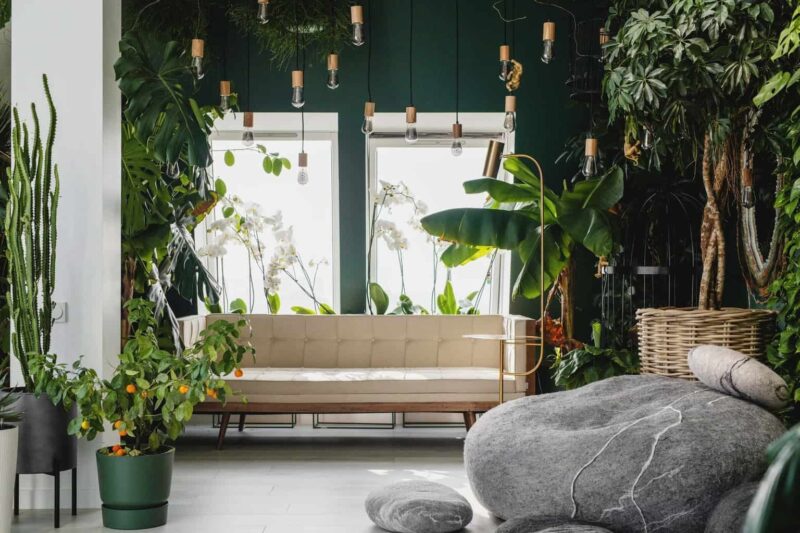
Biophilic design draws from the idea that humans are inherently drawn to nature. Originally championed by Stephen Kellert, the concept goes beyond décor and touches on our well-being.
Core benefits speak for themselves:
- Mental health support through stress relief and mood elevation
- Improved air quality through living plants
- A sense of balance through visual harmony
Emotional connection to natural elements enhances the home environment. It’s not just about how things look—it’s about how they make you feel.
Choosing biophilic design is less about design trends and more about fostering a living space that promotes peace, focus, and vitality.
Living Room
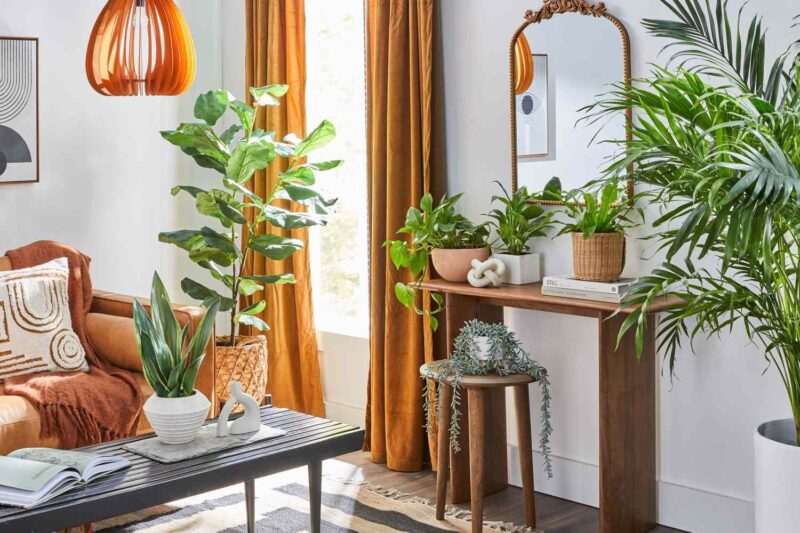
Living rooms serve as the emotional hub of a home, where comfort meets expression.
Nature-inspired design can elevate that energy by introducing organic textures, fresh greens, and thoughtful details.
Embracing greenery here not only beautifies but also soothes, setting a tone of ease and vibrancy. There’s no need to transform the entire space overnight—small, intentional changes go a long way.
Plants as Art
Houseplants become more than decoration when used intentionally—they transform into living art. Living walls and vertical gardens create structure and rhythm on otherwise flat walls. They act as ever-changing canvases that clean the air while catching the eye.
Moss frames, on the other hand, offer color and serenity without dominating the space, ideal for tighter corners or compact walls.
Statement plants like monstera, palms, and fiddle leaf figs lend sculptural quality with bold silhouettes and generous foliage. Placement, size, and leaf texture should sync with the room’s personality.
A well-placed monstera in a ceramic planter can add vibrancy to a mid-century room, while a tall palm in a woven basket softens a clean, minimalist space.
For visual balance between your plants and overall design style, consider the following:
- Sleek pots and sharp-leafed plants enhance modern or minimalist interiors
- Trailing vines like pothos or philodendron complement rustic, boho, or eclectic styles
- Plants with upright growth patterns (like snake plants) can frame furniture or define corners
Botanical Accents
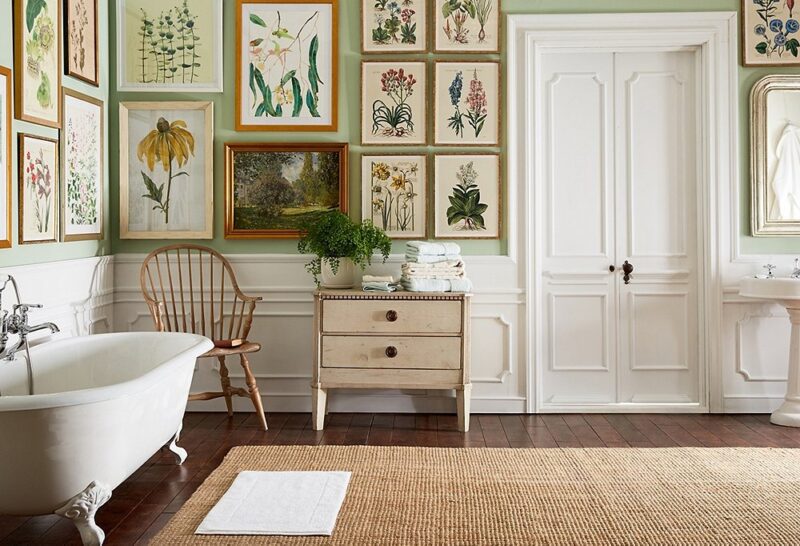
Not every nature-inspired touch needs watering. Botanical prints and patterns offer greenery’s benefits without the upkeep. Wallpapers with subtle palm or fern motifs bring a gentle organic rhythm to walls, especially when paired with neutral furniture.
Framed botanical drawings, vintage floral art, or even pressed leaves between glass panels provide natural beauty while maintaining a clean look. Soft furnishings are another effortless canvas for nature to come indoors.
To refresh the space with subtle yet striking natural details:
- Choose curtains or throw pillows with leafy or floral prints
- Use vine-inspired fabrics on accent chairs or stools
- Add fruit- or blossom-themed art pieces for seasonal interest
These elements work together to energize the room without overwhelming it.
Decor Tips
Greenery needs intentional placement to feel integrated, not cluttered. A few well-placed touches can create layers, movement, and energy in even the smallest space. Use the following tips for a balanced look:
- Group plants in odd numbers—threes or fives—for visual harmony
- Mix leaf shapes and plant heights to introduce dimension and rhythm
- Place faux plants in dim corners or areas with low maintenance capacity
Lighting also matters. Natural sunlight enhances plant health, but it also highlights textures in bark, leaves, and ceramics. Even indirect light bouncing off a mirror or wall can spotlight greenery in an appealing way.
A living room with natural elements becomes more than a place to sit—it becomes a calm, nurturing atmosphere that lifts your day without asking much in return.
Kitchen & Dining

Edible plants offer both function and style. Herb gardens in jars, hanging planters, or wall-mounted containers bring basil, thyme, and mint within arm’s reach.
Table centerpieces made of dried or fresh flowers, citrus fruits, or seasonal greens create ever-changing natural art. For longer-lasting options, preserved moss or air plants can add low-maintenance texture.
Open shelves are a perfect canvas—mix potted succulents, miniature trees, and moss bowls with dishware and cookbooks. Greens add softness and break the repetition of hard surfaces.
Natural elements like wood trays, linen napkins, and stone bowls complement greenery and help ground the space in organic beauty. Meals feel more nourishing when surrounded by signs of life.
Bathroom
Bathrooms often feel sterile—but greenery can soften harsh lines and inject a sense of calm. Hanging plants near mirrors or windows turn even tiny bathrooms into spa-like sanctuaries.
Air-purifying plants like snake plants, ferns, and pothos handle humidity with ease. They thrive on steamy showers and low light, making them bathroom MVPs.
No need to crowd the vanity. Try magnetic planters on mirrors, suction-cup shelves on glass, or ceiling-mounted hangers.
Choose minimalist pots or natural containers—stone, wood, or matte ceramic—to keep things sleek. Even one healthy plant can make your morning routine feel more grounded.
Greenery turns the bathroom into a space that restores rather than just functions.
The Bottom Line
Nature-inspired decor offers more than visual pleasure—it promotes wellness, focus, and a sense of comfort.
Start small. Add one plant, one print, or one natural accent. Every small change contributes to a living space that feels more alive.
A home that breathes, grows, and soothes is one that gives back to those who live in it.

